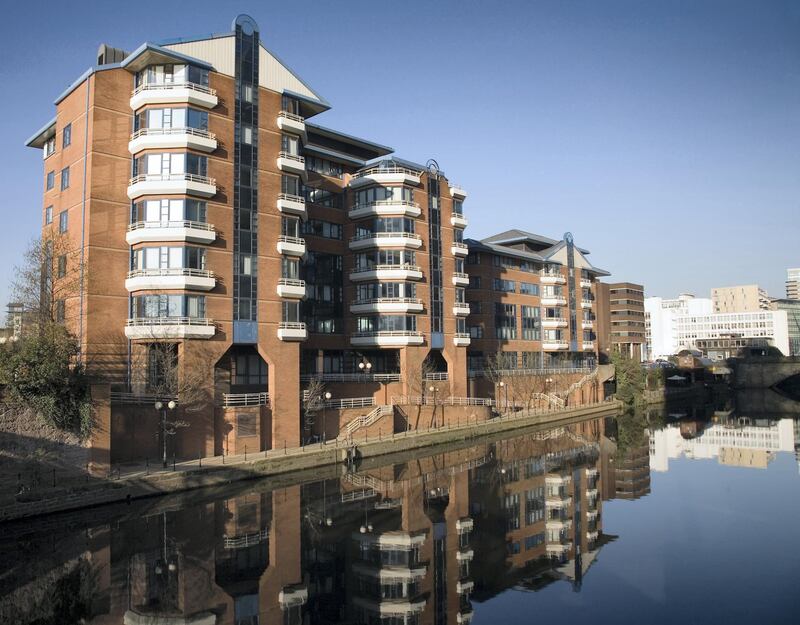With more mortgage options available to expatriates and overseas investors and exciting new developments coming through across the country, there has never been a better time to invest in UK property.
The weak pound, interest rates at an all-time low and very affordable housing prices outside London and the South-east has led to increased popularity among investors from the UAE.
What may surprise many is that in real terms, property prices in the United Kingdom have fallen compared with a decade ago and there is a huge north/south divide. Prices of goods and services in general, as measured by the Consumer Prices Index measure of inflation, have increased faster.
So, in real terms, the average UK house price has fallen compared with a decade ago. In London, the average property value has risen by nearly 70 per cent in 10 years, whereas in Northern Ireland it has fallen by more than 40 per cent, according to 2017 data from the Office of National Statistics.
Here is how to avoid the pitfalls many investors face:
Crunch the numbers
It's vital to do the math before investing, or you could be seriously out of pocket. You need to buy an asset, not a liability. Rental income should pay off your mortgage and contribute to your monthly capital and interest repayment costs. Before viewing properties, sit down with a pen and paper and write down the cost of houses you are looking at and the rent you are likely to get.
____________
Read more:
What does 2018 hold for your investment portfolio?
London property market likely to continue price drop in 2018
Foreign buyers face UK capital-gains tax on property purchases
____________
When considering investment in buy-to-let property, make sure you secure a mortgage first. While buy to let or home of multiple occupancies (HMO) are often marketed to non-residents and foreign nationals as high yield investment opportunities, many UK mortgage lenders see these as high-risk propositions. Consequently, you might well find yourself unable to obtain a mortgage, or face higher than normal monthly payments or simply have wasted a lot of time in your dealings with the agent and researching the market.
The general rule of thumb is to obtain an agreement in principle first to understand what you can afford to borrow, the restrictions on the property types and rental income constraints that can limit what you can borrow. Any estate agent working in a buoyant property market would expect to see you have financing agreed in principle before you start to make any offers to purchase.
There are some good buy-to-let mortgages available for expatriates and foreign nationals, including three-year discount rate and buy-to-let mortgages with rates as low as 2.74 per cent. Mortgages are now available for UAE expats and foreign nationals from offshore and UK lenders, with a minimum £100,000 (Dh499,510) loan, with a loan-to-value up to 75 per cent. This opens up the market for foreign nationals and overseas investors purchasing property for as little at £150,000. Interest rates are from 2.74 per cent, with a typical loan term of 25 years.
Location, location, location
Many investors in the UAE are choosing to buy property in the cities and towns in what is known as the northern powerhouse, as they currently offer the best investment opportunities in buy-to-let, with rental yields of 7 per cent in Salford, 5.9 per cent in Leeds and 5.7 per cent in Manchester, according to Kufflink. In fact, Manchester, the unofficial home of the northern powerhouse, sits in the top 10 buy-to-let postcodes in the UK, with rental price growth in 2017 of 7.53 per cent and yields of 6.11 per cent, according to LendInvest. Think about the potential of the town for buy-to-let, for example is the town in a commuter belt, are there good transport links? Are there good schools for young families? Where do the students want to live?
Investors need to research the local area and understand market conditions. Rental yields vary across the country and it’s important to buy in an area with strong rental demand. Like all economic principles, the higher the return, the higher the risk, in other words high rental yields may indicate a lesser propensity for capital growth in a region. Always think about the exit when you want to sell. It is also important to consider the size of the owner-occupier market you are wanting to sell to, versus only selling to investors who will also be looking for the highest possible rental yields.
Don’t be emotional
It can be easy to follow your emotions when purchasing an investment property. The golden rule is don’t buy a house because you love it and would like to live there yourself. You need to love the deal and not the property. Any property you invest in must deliver on the financials.
Property is a team sport. Investors need the support of a good mortgage broker, lawyer, accountant and builder. Find unbiased professionals and source recommendations from other investors. Don’t rely on portfolio-building companies for unbiased advice. Often, they are trying to sell you something. Leverage your time and don’t try to do everything yourself.
Once you have the mortgage rate and potential rent sorted, then you should carefully work out how your investment will perform. Ensure you factor in maintenance costs and work out how you will cope if you have void periods between occupancy. Make sure you know how much the mortgage repayments will be and if it is a tracker, allow for rates to rise.
Stuart Marshall is the managing director of Liquid Expat Mortgages






